Therapeutic Laser treatment in physiotherapy is a cutting-edge technology that harnesses the power of light to treat musculoskeletal conditions. This non-invasive method helps manage pain, accelerate healing, and enhance mobility. This article explores the workings of therapeutic lasers, their benefits, and their growing use in physiotherapy practice.
Key Takeaways
Therapeutic laser therapy is also known as Low-Level Laser Therapy (LLLT), Cold Laser Therapy and Red Light Therapy and is used in physiotherapy to treat musculoskeletal conditions by alleviating pain and enhancing healing.
- What It Is: Uses laser light to promote healing, reduce pain, and improve tissue function.
- How It Works: Stimulates cells via photobiomodulation, increasing ATP production, reducing inflammation, and accelerating tissue repair.
- Types:
- LLLT (Low-Level Laser Therapy) – For pain relief and wound healing.
- MLS Laser Therapy – Dual wavelengths for deeper penetration and faster treatments
- Benefits:
- Reduces pain & inflammation
- Speeds up healing & tissue regeneration
- Improves mobility & circulation
- Common Uses: Treats injuries, arthritis, chronic pain, post-surgery recovery, and sports injuries.
- Safety: Very safe to use with few side effects of contra-indications
- Integration: Works well when combined with other physiotherapy treatments
What is Therapeutic Laser?
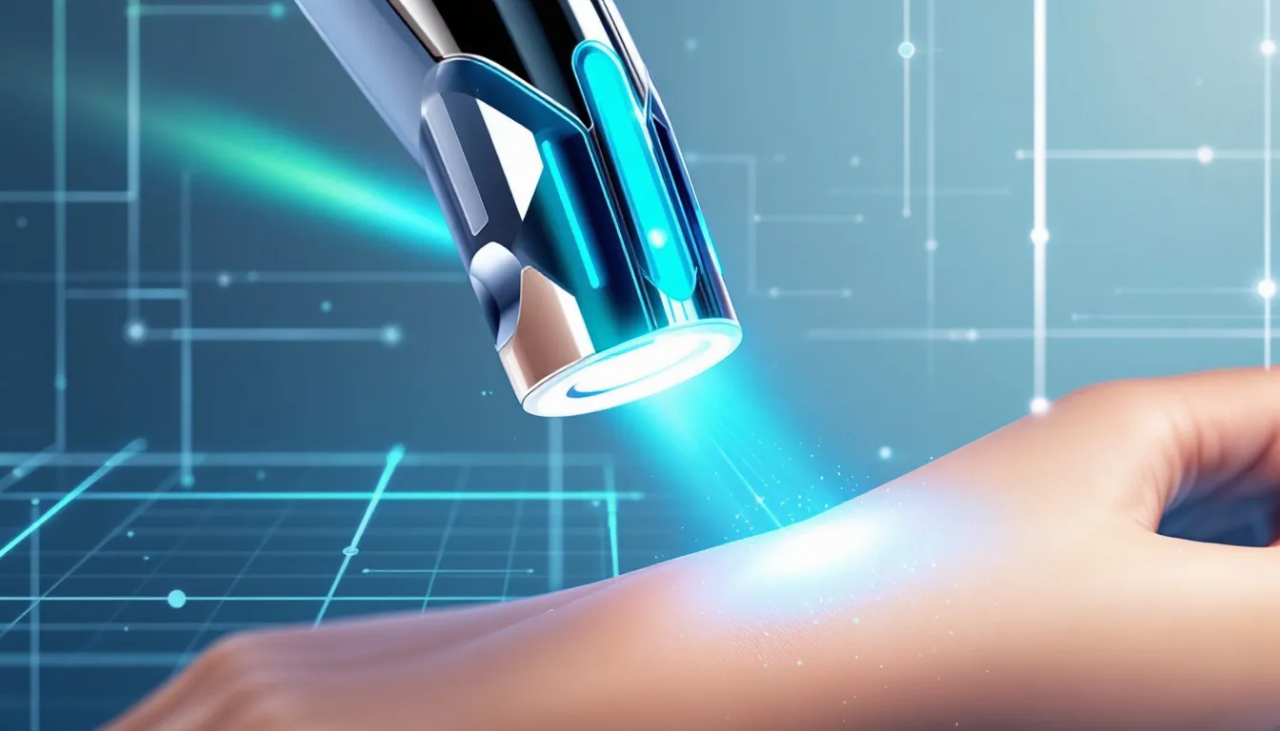
Therapeutic lasers operate by emitting a concentrated light beam (laser) that interacts with tissues in the body through processes like absorption and reflection. The laser releases photons in a controlled manner, that can penetrate tissues to varying depths, utilising light amplification and stimulated emission of radiation.
In physiotherapy, therapeutic lasers are employed to treat a range of musculoskeletal conditions. The technology is designed to support non-invasive treatments that alleviate pain, enhance healing, and reduce inflammation.
Types of Therapeutic Lasers
Therapeutic lasers are classified as Low-Level Laser Therapy (LLLT). LLLT uses the lasers to stimulate cell function without generating heat, making it ideal for surface injuries and pain treatment. In contrast, HILT generates heat and penetrates deeper into tissues, effectively addressing more severe conditions by destroying pathological tissues.
These power lasers are further classified based on their power. Some hand held devices are classified as Class 1 or 2 and may be used in a home environment. Class 3 lasers and Class 4 are used in health care practices and usually range 500 mW and above. These classifications aid in selecting the appropriate type of laser for specific therapeutic needs, ensuring optimal outcomes for patients. An important consideration is that the higher power lasers are able to deliver the dosage required for a therapeutic effect is a shorter time and over fewer treatment.
How Therapeutic Lasers Work
The effectiveness of therapeutic lasers lies in their ability to induce photobiostimulation, a process that triggers beneficial cellular responses. When laser light interacts with cellular components, particularly fibroblasts, it enhances tissue repair processes to stimulate tissue healing. The energy absorbed by the mitochondria inside cells boosts ATP production, increasing the cell’s energy availability for healing.
Low-Level Laser Therapy can also work by stimulating the proliferation of various cell types involved in tissue regeneration. Advanced systems like MLS® Laser Therapy use a patented multi-wavelength emission system to deliver a synchronised superpulsed laser energy, ensuring a comprehensive therapeutic effect. This approach optimises the healing environment, promoting quicker and more effective recovery.

Benefits of Therapeutic Laser in Physiotherapy
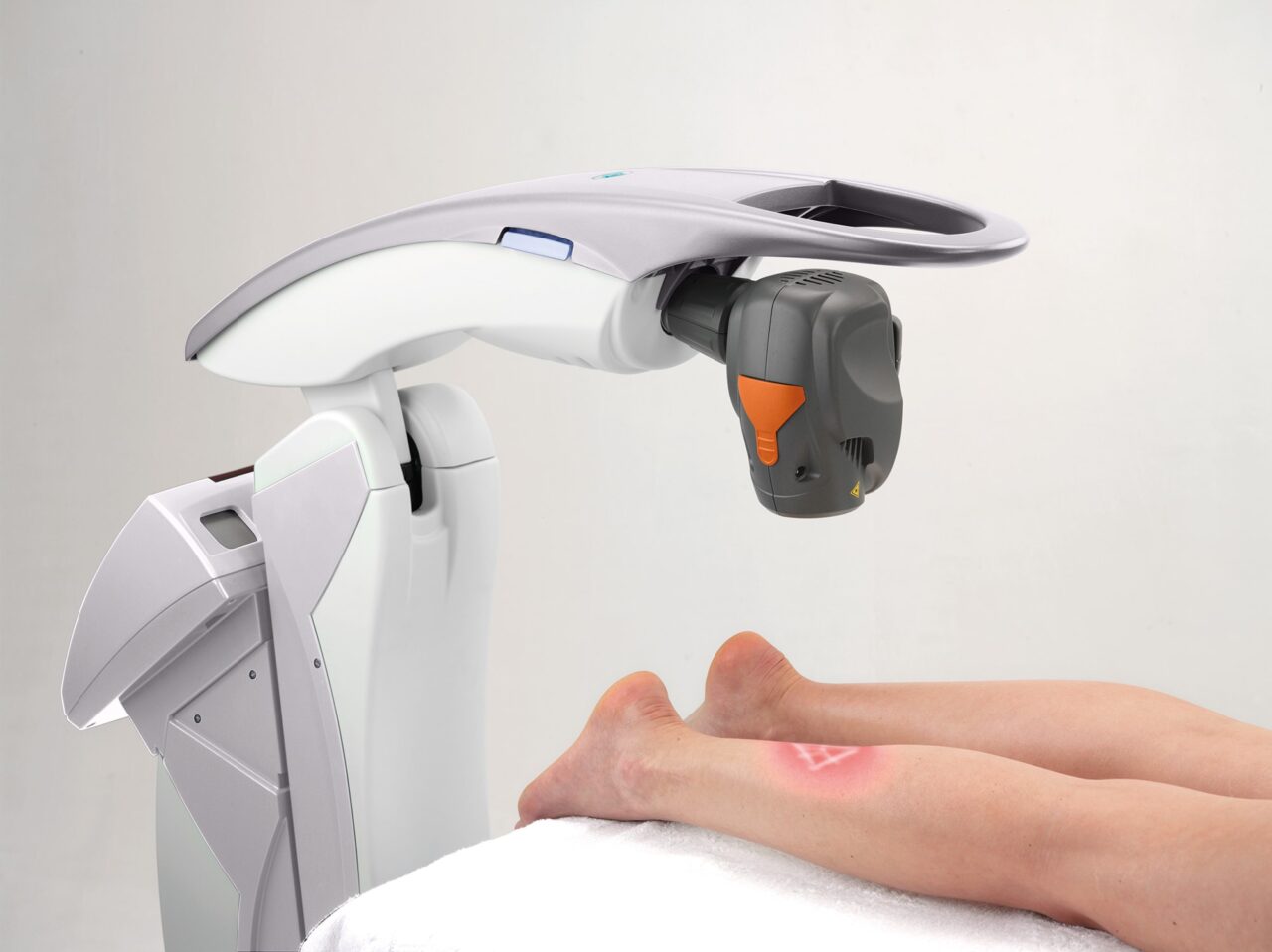
Therapeutic lasers offer a multitude of benefits in physiotherapy, primarily focusing on pain management, accelerated healing, and enhanced mobility. Therapeutic lasers are used to alleviate pain, reduce inflammation, and support faster recovery from injuries without invasive procedures.
Integrating laser therapy with other treatment modalities, such as massage therapy and kinesiology, can further enhance patient care. Collaboration with healthcare professionals ensures that laser therapy is part of a comprehensive treatment strategy, maximizing its therapeutic effects.
Let’s delve deeper into each of these benefits.
Pain Management
One primary use of therapeutic lasers is managing pain. High-Intensity Laser Therapy is particularly effective for treating chronic pain by reaching deeper tissues, whereas lower powered lasers can be used for surface injuries though with a longer treatment duration. MLS® Laser Therapy, specifically, is renowned for its ability to manage both acute and chronic pain conditions, including musculoskeletal pain and inflammation.
One of the key mechanisms by that Low-Level Laser Therapy alleviates pain is by temporarily blocking nerve conduction, which helps reduce pain sensations. MLS® Laser Therapy is also used to manage pain, swelling, and inflammation, providing a non-invasive and pain-free treatment option for patients. This makes it an ideal choice for individuals seeking relief from chronic conditions without the need for medication or surgery.
Incorporating laser therapy into a comprehensive treatment plan enables physiotherapists to offer more effective pain management solutions. Whether it’s through standalone sessions or in combination with manual therapy, the ability to reduce pain and inflammation significantly enhances the patient’s quality of life.

Accelerating Healing
Laser therapy is a powerful tool for accelerating the healing process. Enhancing the metabolism of cells involved in healing, Laser Therapy promotes quicker recovery from injuries such as sprains and strains. MLS® Laser Therapy in particular is highly effective post-surgery, reducing post-operative pain and swelling, and promoting faster tissue healing for a better patient experience.
Laser Therapy stimulates cellular activity, promoting tissue repair, reducing inflammation, and alleviating pain without generating heat or causing side effects. This makes it a safe and effective option for supporting the healing of soft tissue injuries, strains, and sprains. The overall result is a significant reduction in healing time, allowing patients to return to their normal activities sooner.
Enhancing Mobility
Improving mobility is another significant benefit of therapeutic laser therapy. Lasers help restore joint mobility and function by reducing pain, swelling and stiffness. This is particularly beneficial for patients suffering from musculoskeletal pain, as it promotes rehabilitation and enhances overall mobility.
MLS® Laser Therapy has been shown in clinical research to improve mobility and rehabilitation outcomes, making it an invaluable tool in physiotherapy. Promoting healing and reducing inflammation helps patients regain normal joint function and enhances their ability to perform daily activities and return to normal function sooner.
The combined effects of pain reduction and accelerated wound healing contribute to better mobility, facilitating a quicker return to a healthy, active lifestyle.
Common Conditions Treated with Therapeutic Laser
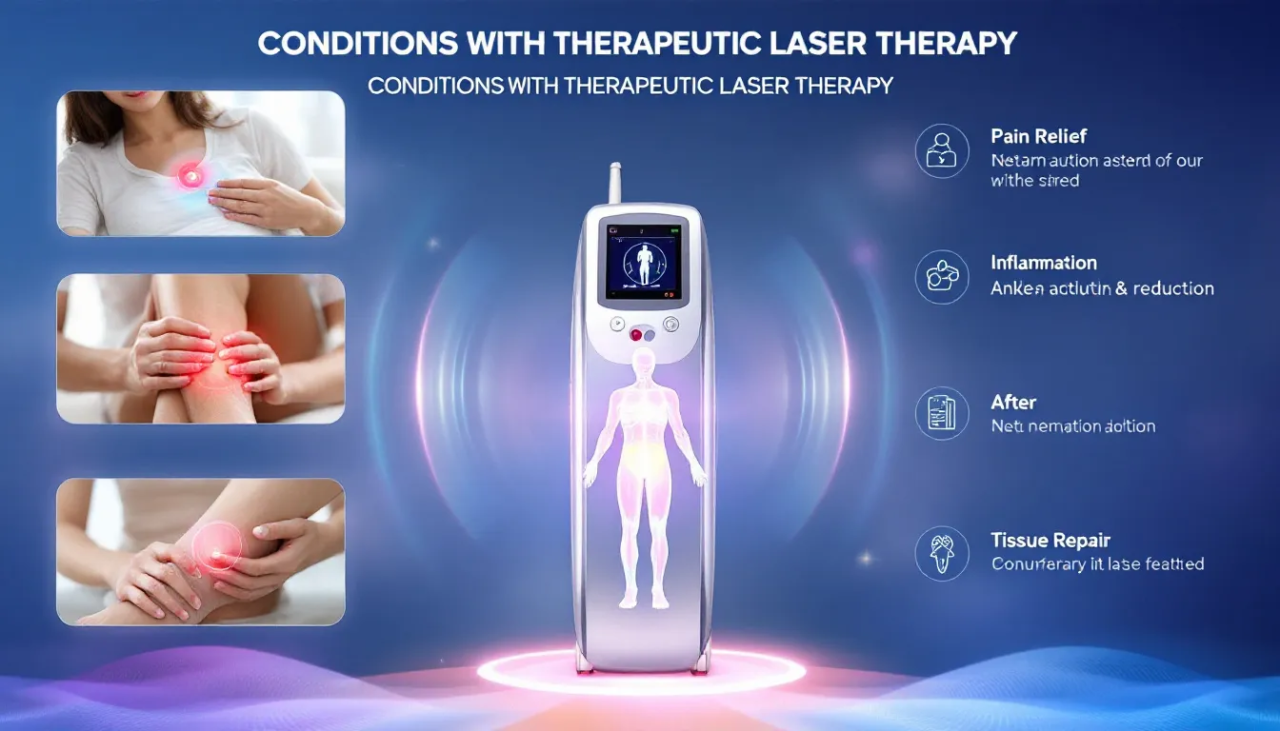
Therapeutic lasers are effective in treating a wide range of conditions in physiotherapy. Commonly treated conditions include osteoarthritis, shoulder impingement, tendon injuries, plantar fasciitis, sciatica, and tennis elbow. Additionally, therapeutic lasers are used for chronic inflammatory conditions like bursitis, tennis elbow, golf elbow and trigger finger, as well as for alleviating back pain and frozen shoulder.
MLS® Laser Therapy is particularly beneficial for post-surgical recovery, as it reduces post-operative pain, swelling, and enhances circulation, leading to quicker tissue healing.
Overall, Low-Level Laser Therapy provides a non-invasive treatment option for addressing various conditions, facilitating both pain management and healing. This versatility makes them a valuable addition to any physiotherapy practice.
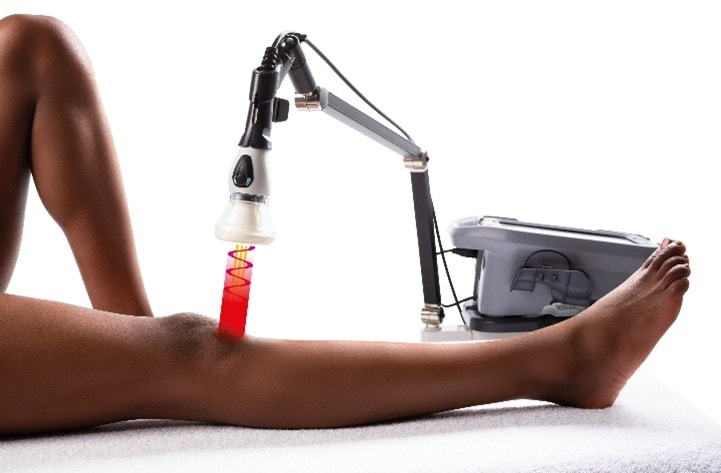
What patients should expect
Laser therapy is a simple, comfortable, and non-invasive treatment for patients. Most individuals experience little to no sensation during the session. The procedure involves a healthcare practitioner holding a laser wand over the targeted area, often moving it slowly for optimal coverage. Advanced systems may use an articulated arm for hands-free treatment, while robotic systems enable scanning over larger areas for enhanced precision.
Before treatment, a consultation allows for assessment and discussion of any concerns. During the session, protective eyewear is worn for safety. In most cases, laser therapy is completely painless, making it a stress-free experience for patients.
MLS® Laser Therapy sessions are typically brief, lasting between 3 to 10 minutes, and patients find the treatment painless and effective.
Potential Risks and Side Effects
All patients (and staff) are required to wear proper eye protection during sessions.
Laser therapy is to be avoided in over the pregnant uterus and in the presence of tumours.
How to Choose the Best Cold Laser Therapy Device for Your Practice
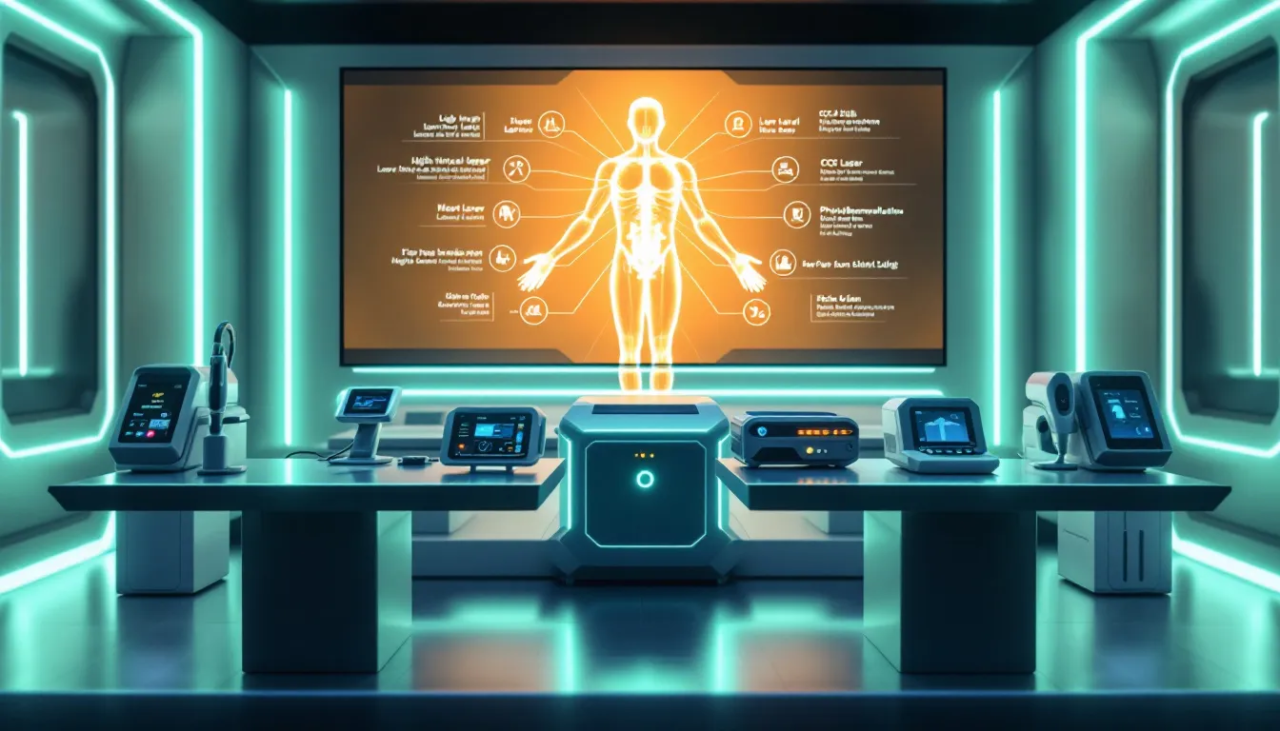
Investing in the right Laser Therapy device can significantly enhance your practice’s treatment capabilities and clinical outcomes. With numerous options available, it’s essential to select a device that meets your clinical needs, provides reliable performance, and integrates seamlessly into your workflow. Here’s what to consider when choosing the best cold laser therapy device for your practice.
1. Determine Your Treatment Needs
The first step in selecting a cold laser therapy device is understanding your specific treatment applications. Consider the conditions you frequently treat and the level of penetration required.
Common Uses:
- Pain management (joints, neuropathy, musculoskeletal conditions)
- Sports injuries (sprains, strains, tendonitis)
- Post-surgical recovery (wound healing, scar reduction)
- Rehabilitation therapy (joint inflammation, spinal adjustments)
Different wavelengths and power levels affect how deeply the laser penetrates. If you treat deep tissue conditions, you’ll need a higher-powered laser therapy device compared to those treating surface-level injuries.
2. Understand Wavelengths and Power Levels
Laser devices use specific wavelengths (measured in nanometers, nm) to target different tissues. For example,800-1000 nm – penetrates deeper into tissues for muscle, joint, and nerve-related treatments.
Power output, measured in milliwatts (mW) or watts (W), determines treatment time and effectiveness. Higher peak power levels allow for shorter treatment durations but should be adjustable to accommodate different conditions. The peak power of the laser is the most important criteria to compare, rather than average power. High peak power lasers will deliver large units of energy deep into the tissues and considerably improve treatment results, shorten treatment times and require fewer appointments.
3. Look for Adjustable Features
A high-quality device should offer:
- Settings that are stored into the device and can be recalled for easy use and consistent settings.
- Adjustable power levels for customised treatments.
- Pulsed and continuous wave modes for varied applications.
- Special attachments e.g. for laserpuncture may suit your needs.
- Hands-free models reduce fatigue, are time saving and allow multitasking.
- Robotic laser systems cover large areas efficiently, provide exact dosage and allow multitasking.
4. Portability and Design
Depending on your practice setup, you may need:
- Handheld, portable devices for home visits or mobile clinics often supplied with a rechargeable battery
- Tabletop or larger units for dedicated in-clinic use
- Hands-free or robotic design for faster and easier treatment
5. Regulatory Clearance & Clinical Validation
Always choose a device that is approved by the various regulatory authorities such as TGA, EC and FDA and clinically tested device to ensure safety, effectiveness, and compliance with medical standards. Look for brands that provide documented research to support their claims.
6. Ease of Use & Training Support
User-friendly devices with intuitive interfaces make treatments more efficient. Check if the manufacturer provides:
- Easy to access training.
- Easy-to-follow user manuals and protocols.
- Customer support
This ensures that you and your staff can confidently integrate the laser into your practice.
7. Cost & ROI Considerations
Investing in a quality cold laser therapy device can generate significant revenue through additional treatments. Consider:
- Initial investment cost vs. long-term ROI
- Warranty and durability for long-term reliability
Integrating Therapeutic Laser into Your Physiotherapy Practice
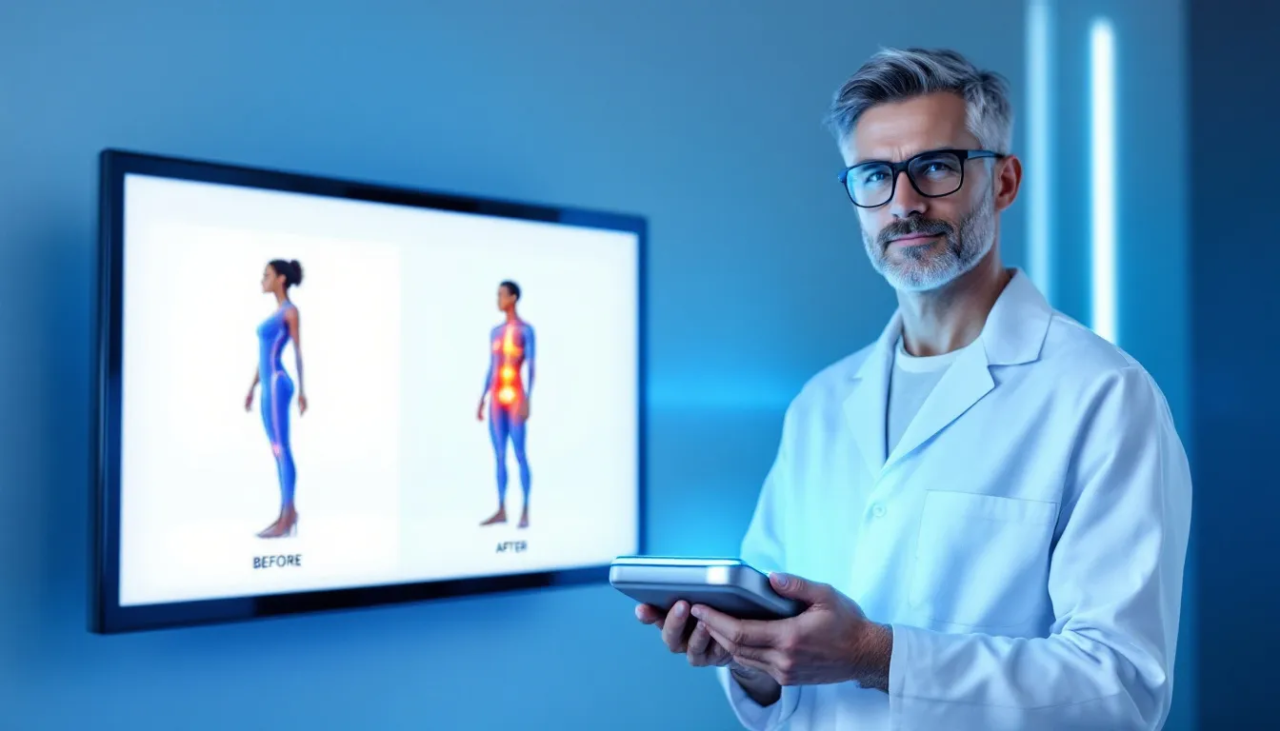
Integrating therapeutic laser into your physiotherapy practice requires specialised training and ongoing support. Heal With Laser provides comprehensive technical support and training to ensure the successful implementation of MLS® Laser Therapy. This includes patient leaflets, promotional materials, and ongoing instruction through various formats.
The benefits of MLS® Laser Therapy, such as non-invasive pain relief, faster healing, and improved patient outcomes, make it a valuable addition to any practice. Offering this advanced treatment option allows clinics to enhance their reputation, boost revenue, and provide better care for their patients.
Summary
Therapeutic lasers are revolutionising physiotherapy by offering non-invasive solutions for pain management, accelerated healing, and enhanced mobility. By understanding the types of lasers, how they work, and their benefits, practitioners can make informed decisions about incorporating laser therapy into treatment plans.
Whether you’re a patient seeking relief or a practitioner looking to enhance your practice, therapeutic lasers provide a cutting-edge, effective, and safe option for improving health outcomes. Embrace this technology and experience the transformative benefits it brings to physiotherapy.
Frequently Asked Questions
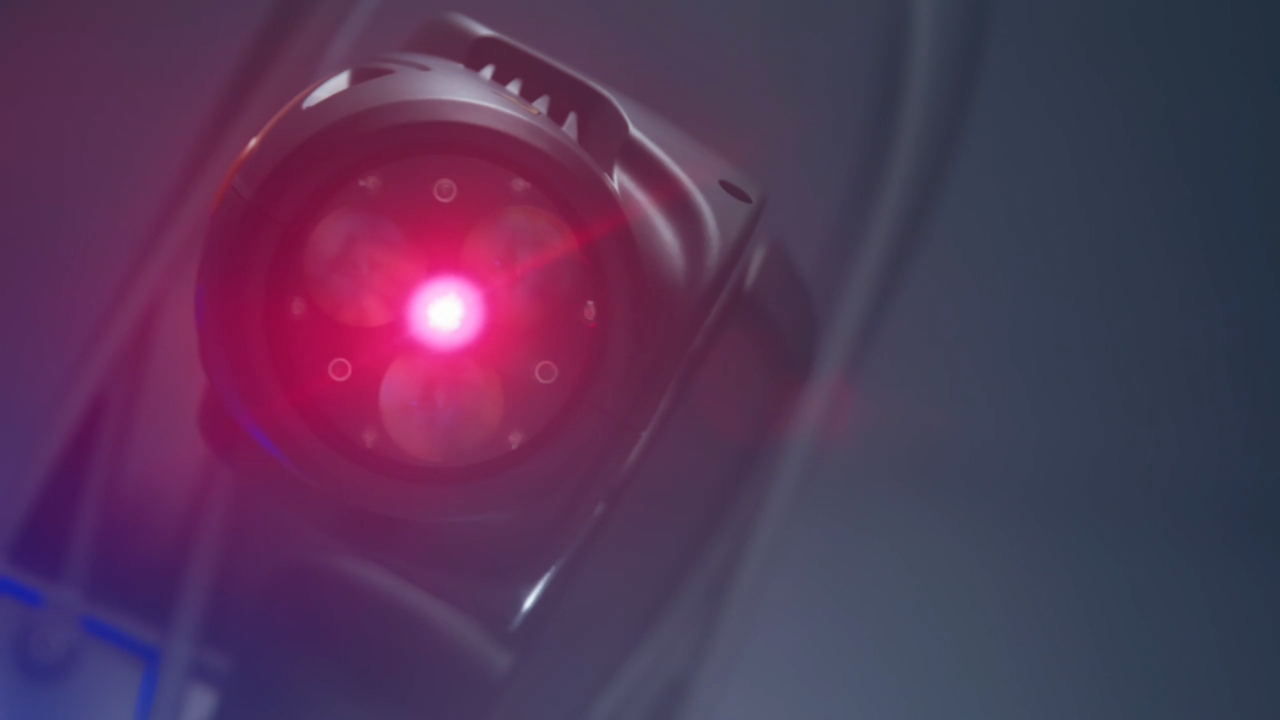
What is the primary use of MLS® therapy in rehabilitation medicine?
MLS® therapy is primarily used in rehabilitation medicine to treat pain, swelling, and inflammation in the musculoskeletal system. Its effectiveness in addressing these issues makes it a valuable tool in rehabilitation practices.
How long do treatment sessions with MLS® Laser typically last?
Treatment sessions with MLS® Laser typically last between 3 to 10 minutes. This duration ensures efficiency while effectively addressing the patient’s needs.
What support does Heal With Laser provide for MLS® Laser users?
Heal With Laser gives owners free membership of the world first Heal With Laser Academy that contains on-line training, education and marketing resources. Heal With Laser offers comprehensive support for MLS® Laser users, including patient leaflets, promotional materials, online training videos, installation assistance, and ongoing instructional resources. This ensures users have the necessary tools and guidance to effectively utilize the laser technology.
What are some common applications for MLS® Laser therapy?
MLS® Laser therapy is commonly applied for general pain management, including conditions such as back pain, soft tissue injuries, tendinopathy, and arthritis. These applications facilitate effective relief and recovery for various musculoskeletal disorders.
How does MLS® therapy benefit joint disorders?
MLS® therapy offers significant immediate and long-term relief for various joint disorders, effectively addressing both acute and chronic symptoms. This makes it a valuable option for those seeking to improve joint health and mobility.
